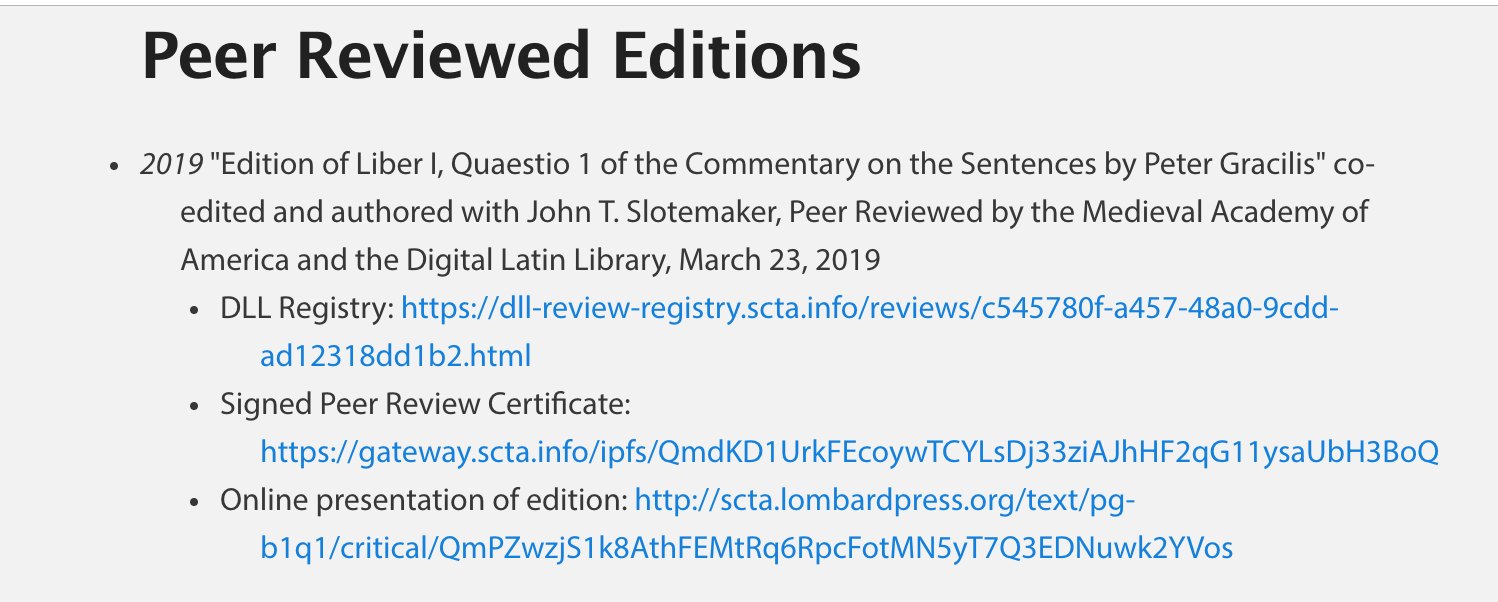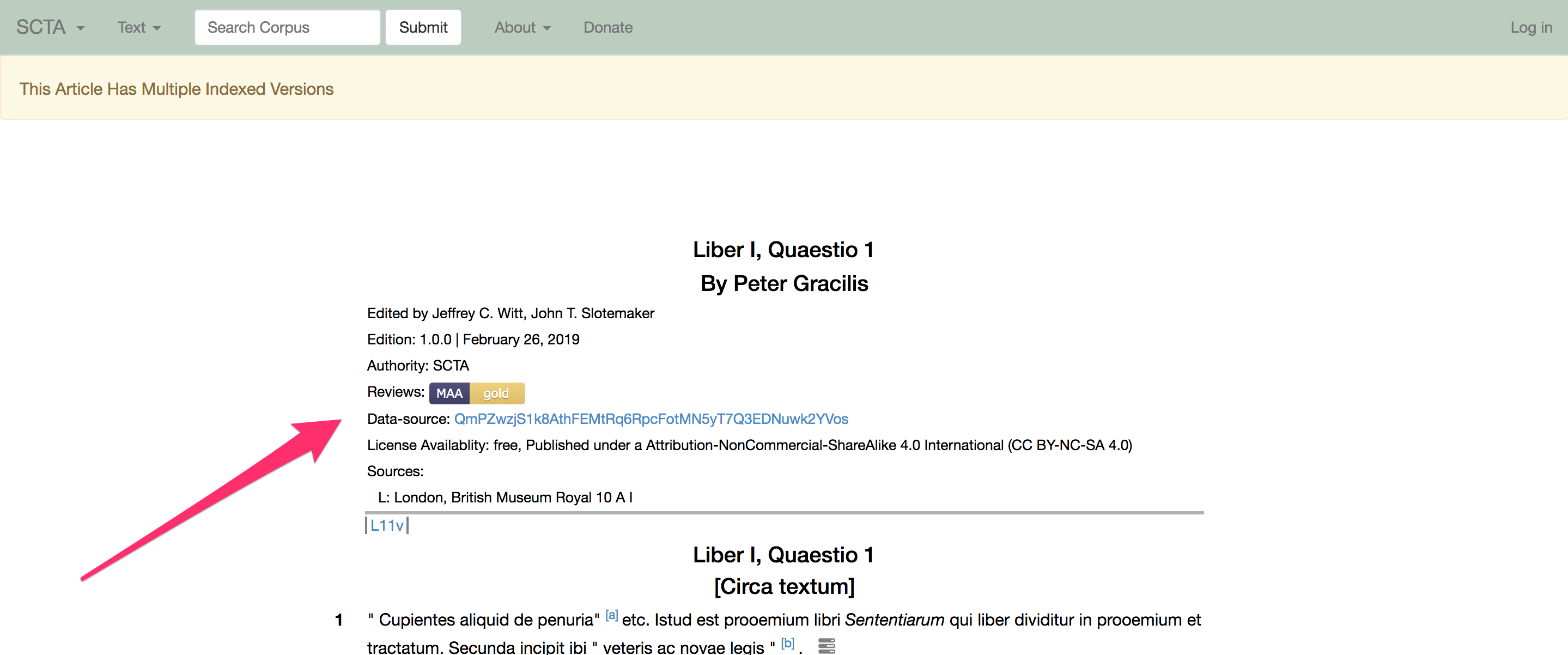Peer Review
Peer Review with the SCTA, DLL, and MAA
The SCTA works in partnership with the Digital Latin Library and the Medieval Academy of America to peer review critical editions at the data level, allowing the text to be viewed anywhere (in print or online) and at the same time allowing end users to recognize that the data underlying the presentation has met the quality and standards of the Medieval Academy of America on par with any edition that would appear in Speculum.
Peer Reviewed Critical Edition Meets the standards of a critical edition; judged by the MAA as equal in quality to the kinds of editions that appear in the MAA printed editions series or scholarly articles that appear the MAA journal “Speculum”.
Process
To initiate a peer review of edition of a Scholastic text that can be aggregated by the SCTA and the Digital Latin Library, the following steps need to be followed.
- Initiate a proposal query by contacting Jeffrey C. Witt (director of the SCTA) jcwitt [at] loyola [dot] edu
- Write a proposal describing the edition being prepared
- Review proposal with the SCTA (Jeffrey C. Witt)
- Agree to and sign the SCTA Contributor License Agreement
- The proposal will then be submitted jointly to the DLL and MAA, along with a cover letter of support from the SCTA.
- When the proposal has been reviewed and approved, complete the edition, using the LombardPress-Schema encoding standards and other SCTA encoding requirements.
- Review edition with the SCTA (Jeffrey C. Witt)
- The edition will then be sent jointly to the DLL and MAA with another cover letter from the SCTA.
- The edition will then be sent out to blind peer reviewers by the MAA.
- If corrections and adjustments are needed, make corresponding adjustments.
- Once, approved, the MAA and DLL will mint an official review certificate, signed with the private key of the MAA
- At this point, you can put your edition on your CV, noting that it meets the same quality standards as any edition appearing in Speculum.
- The peer review certificate and imprimatur badge will then be accessible on the web, ready to appear along side any presentation of your edition.
Example
On March 23, 2019, the above process was completed for Question 1 of Peter Gracilis’ Sentences commentary. The entire process took about a year.
Once completed, the published peer-reviewed edition was listed on Jeffrey Witt’s CV as follows:

See http://jeffreycwitt.com/cv#editions
The signed certificate can be accessed on the web:
https://gateway.scta.info/ipfs/QmdKD1UrkFEcoywTCYLsDj33ziAJhHF2qG11ysaUbH3BoQ
It has also been indexed and can be discovered at the DLL Review Registry:
https://dll-review-registry.digitallatin.org/reviews/c545780f-a457-48a0-9cdd-ad12318dd1b2.html.
The authenticity of the review can be verified use gpg verification steps as described
here in these self verification steps
Likewise, any publication presentation can query the DLL registry to see if a review exists for the underlying data. If a review does exist, it can communicate to the end user that the presented text has been peer-reviewed.
For example like so:

You can view the reviewed text online via the LombardPress-Web presentation here
Notes
Early sketches and demonstrations of this process can be consulted here:
http://jeffreycwitt.com/2017/12/15/travelling-imprimatur-demo/
http://jeffreycwitt.com/2016/05/19/the-traveling-imprimatur/